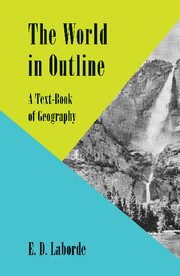Summary
AFRICA is a part of the Old World and is actually joined to Asia by the isthmus of Suez. Although it is separated from Arabia by the Red Sea and from the south of Europe by the Mediterranean, yet the geographical affinities of the opposite shores make the sea a bond of union rather than a sundering barrier. But circumstances have caused a mere strip of the north and northeastern coasts to be connected historically with the civilisation of Eurasia, while the great central and southern regions of the continent have been among the last portions of the Earth's surface to yield to the exploring tendencies of the western European.
Position and Size. The Equator passes almost midway across Africa, whose extreme ends reach Lat. 37° N. and 35° S. The meridian of Greenwich crosses Algeria and the Gold Coast, placing a large slice of the bulge of the Sahara in the western hemisphere. Hence, the standard time for the whole Union of South Africa is based on the local time along the meridian for 30° E. The greatest length of Africa is 5000 miles from north to south, while the greatest breadth from east to west is 4000 miles. In area the continent is twice as big as Australia and twenty times as large as the British Isles, having a surface measurement of about 11 million square miles. The continent is often compared with South America because both land masses are cut by the Equator and taper towards the south, and with Australia because they are both mainly of similar structure. Such comparisons are natural, since these land masses are the only ones with considerable areas in the southern hemisphere; but in fact the likenesses are only such as are to be expected between similar geographical regions, and the differences are conspicuous and important.
Build and Relief. Except for the Atlas region in the north, Africa is a vast tableland varying in height above sea-level from 6000 feet in the south to 1200 feet in the Sahara.
- Type
- Chapter
- Information
- The World in OutlineA Text-Book of Geography, pp. 194 - 208Publisher: Cambridge University PressPrint publication year: 2013



